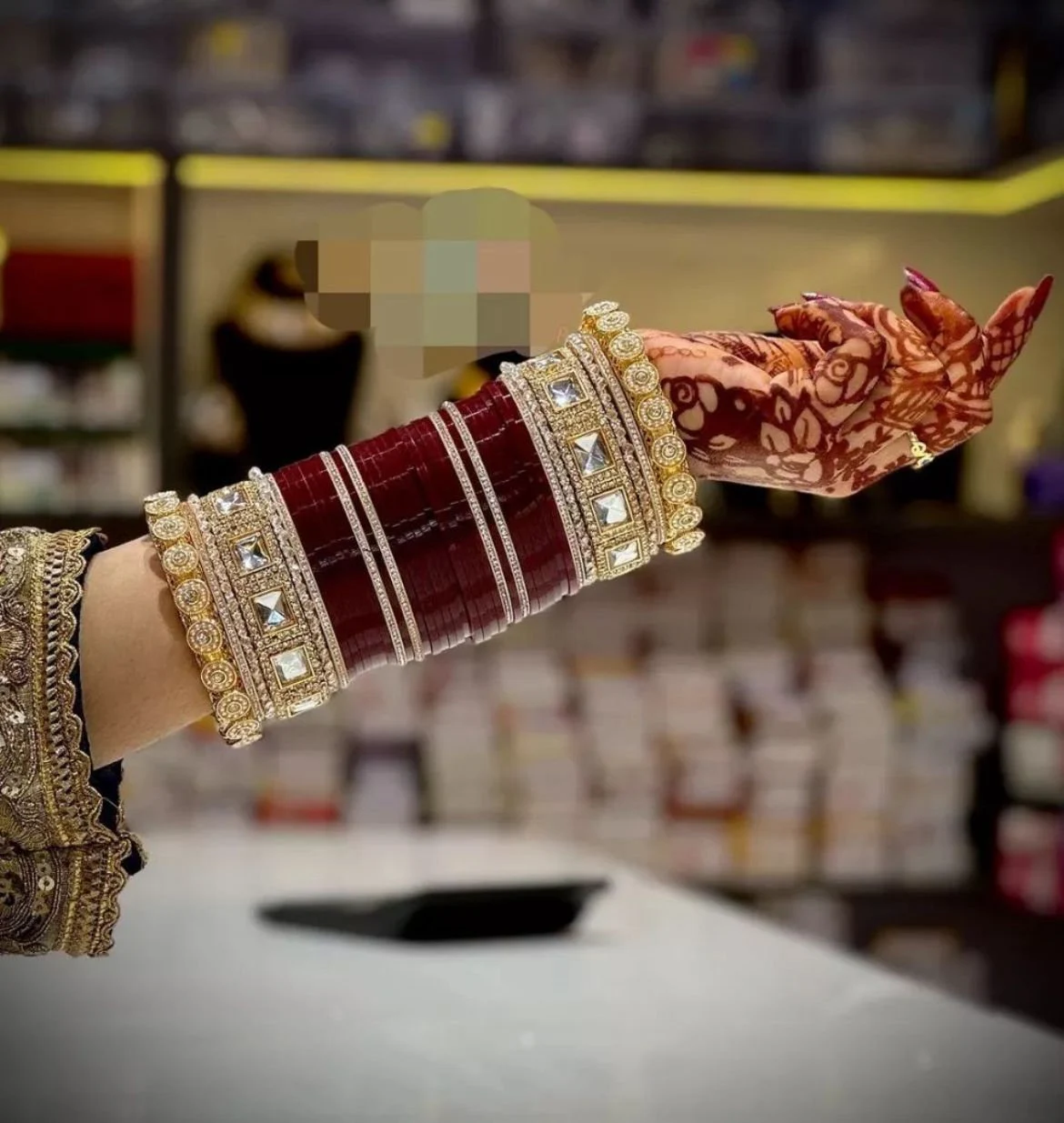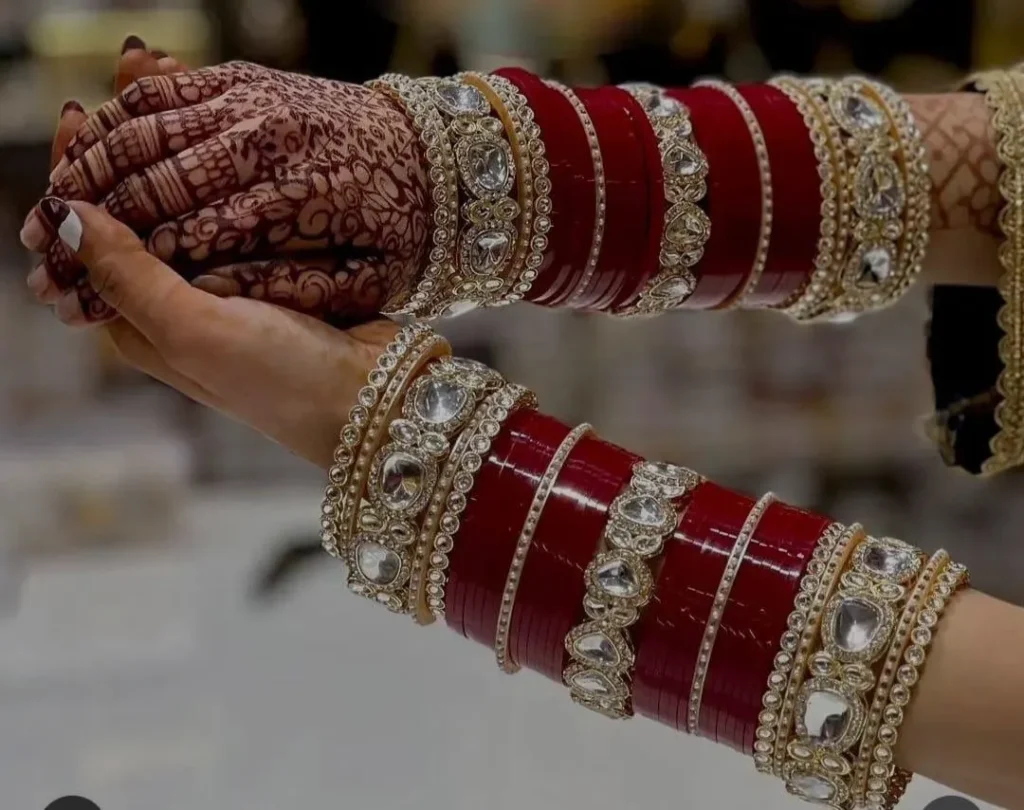The Tradition and Significance of Chooda in Punjabi Culture
If you ever find yourself attending a Punjabi wedding, you might notice the vibrant and beautiful array of red and white bangles adorning the wrist of the bride. These traditional bangles, known as “Chooda,” are not only a striking accessory but also steeped in cultural significance and tradition.
What is Chooda?
The Chooda is a set of 21 bangles, traditionally made of ivory, though modern variations often include plastic or glass materials for different preferences and affordability. These bangles are typically adorned in red and white, with intricate inlays or embellishments, and are worn by the bride as a symbol of her new marital status.
Historical and Cultural Roots
The tradition of wearing Chooda dates back centuries and holds significant cultural importance in Punjabi weddings. Historically, the Chooda is believed to usher in good fortune, represent prosperity, and symbolize the bride’s connection with her new family.
In the past, the ivory bangles were considered auspicious, with the white color representing peace and serenity and the red denoting energy and new beginnings. The bangles are thought to protect the bride from evil spirits and ensure a happy and prosperous married life.
The Ritual of Wearing Chooda
The ceremony that involves the bride donning her Chooda is typically held on the morning of the wedding, often done with the family and close friends in attendance. The ritual is ceremonious, and the bangles are usually gifted to the bride by her maternal uncle and aunt, signifying their blessings and good wishes for her future.
During the ritual, the bride’s wrists are cleansed with a mixture of milk and rosewater, a symbolic cleansing to bring purity and goodwill into her marriage. The uncles and aunts usually help slide the bangles onto her wrists while chanting blessings and prayer.
Duration of Wearing Chooda
The length of time a bride wears her Chooda varies, with traditional beliefs suggesting wearing them from several months up to a year post-wedding. However, in modern practice, the duration has become flexible, adjusted to personal preferences and practicalities of daily life.
Modern-Day Adaptations
While the traditional red and white Chooda remains a staple, contemporary brides often add their personalized twists. Some brides opt for Chooda with additional colors or prefer more delicate designs that align more closely with their personal sense of style. The essence continues to solidify the symbolic value while allowing room for personalization.
The Chooda ceremony not only augments the bride’s appearance through its visual appeal but also binds familial ties and cultural heritage. This beautiful tradition exemplifies the balance between maintaining age-old customs while adapting to present-day needs.
In conclusion, the Chooda is more than just ornamental; it embodies the rich history, familial bonds, and auspicious blessings vital to Punjabi culture. Each bangle tells a story of transition, fortune, and a hopeful future, making it an integral part of a Punjabi bride’s journey into married life.
For more such Articles, visit https://ethnicreation.in/why-do-punjabi-brides-wear-kalire/


